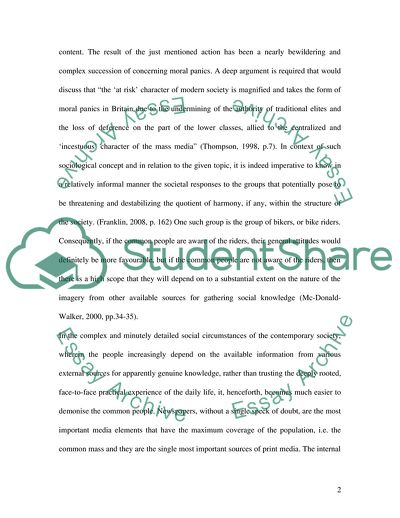Cite this document
(Role of the Media in the Demonisation of the Bikers Article, n.d.)
Role of the Media in the Demonisation of the Bikers Article. https://studentshare.org/media/1722463-what-role-do-the-media-play-in-the-demonisation-of-bikers
Role of the Media in the Demonisation of the Bikers Article. https://studentshare.org/media/1722463-what-role-do-the-media-play-in-the-demonisation-of-bikers
(Role of the Media in the Demonisation of the Bikers Article)
Role of the Media in the Demonisation of the Bikers Article. https://studentshare.org/media/1722463-what-role-do-the-media-play-in-the-demonisation-of-bikers.
Role of the Media in the Demonisation of the Bikers Article. https://studentshare.org/media/1722463-what-role-do-the-media-play-in-the-demonisation-of-bikers.
“Role of the Media in the Demonisation of the Bikers Article”. https://studentshare.org/media/1722463-what-role-do-the-media-play-in-the-demonisation-of-bikers.


